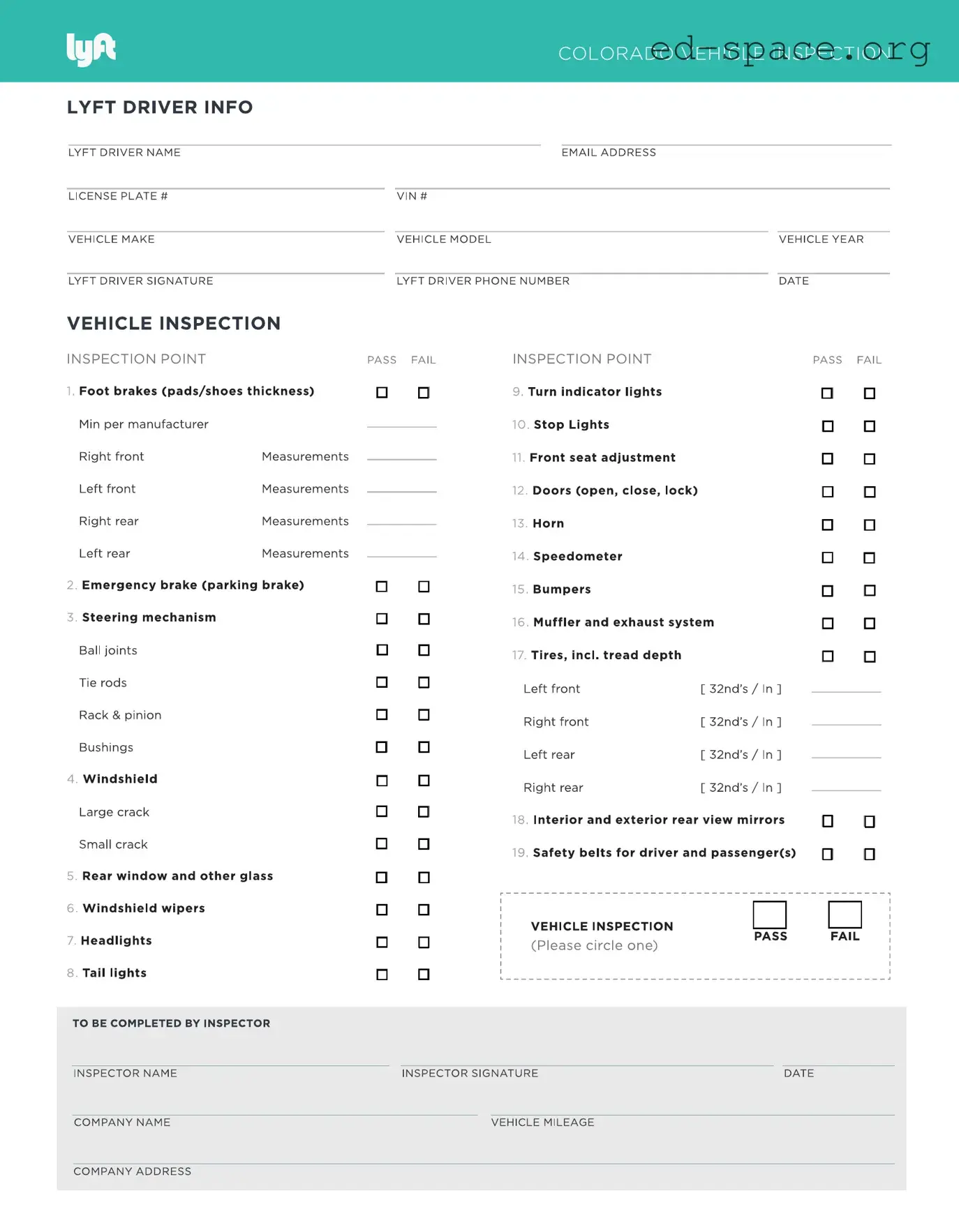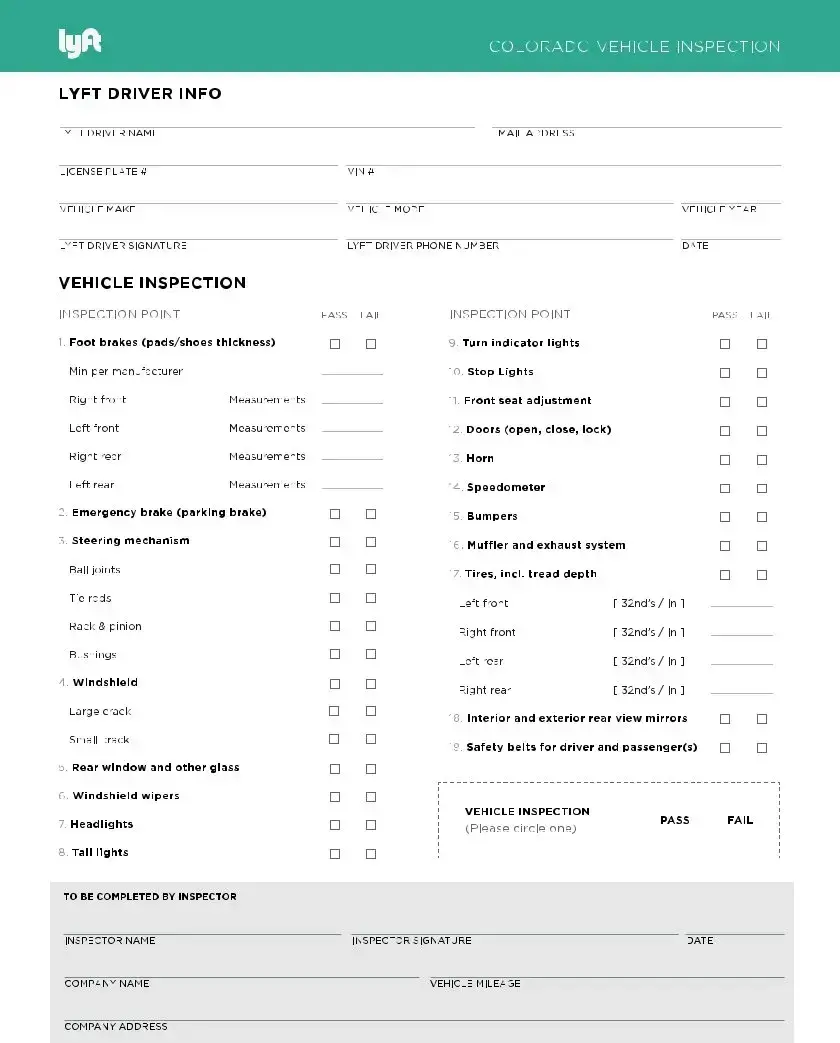What is the purpose of the Lyft Inspection Form?
The Lyft Inspection Form is a crucial document used to ensure that vehicles used by Lyft drivers meet specific safety standards and criteria set by the company and local regulations. Its primary goal is to verify that the car is in good operating condition, safe for both driver and passengers, and compliant with the vehicular standards required for service.
How often do drivers need to complete a Lyft vehicle inspection?
Lyft requires that drivers complete a vehicle inspection at least once a year or in accordance with local regulations, whichever is more stringent. This is to ensure continuous compliance with safety standards. Additionally, if a driver switches to a different vehicle, a new inspection for that vehicle is mandatory before it can be used for Lyft services.
What areas of the vehicle does the Lyft Inspection Form cover?
The Lyft Inspection Form covers several vital areas of the vehicle to assess its roadworthiness and safety. These areas typically include the brakes, tires, lights (headlights, tail lights, turn signals), windows and windshield, mirrors, seat belts, and the horn. The inspection also covers the overall condition of the vehicle to ensure there are no major damages or issues that could affect its safe operation.
Can a driver fail the Lyft vehicle inspection, and what happens if they do?
Yes, a driver can fail the Lyft vehicle inspection if their vehicle does not meet the necessary safety standards and criteria outlined in the inspection form. If a vehicle fails the inspection, the driver will be given details regarding the specific reasons for the failure and usually will be required to repair any issues before re-submitting their vehicle for another inspection. Drivers are not allowed to use the vehicle for Lyft services until it passes the inspection.

